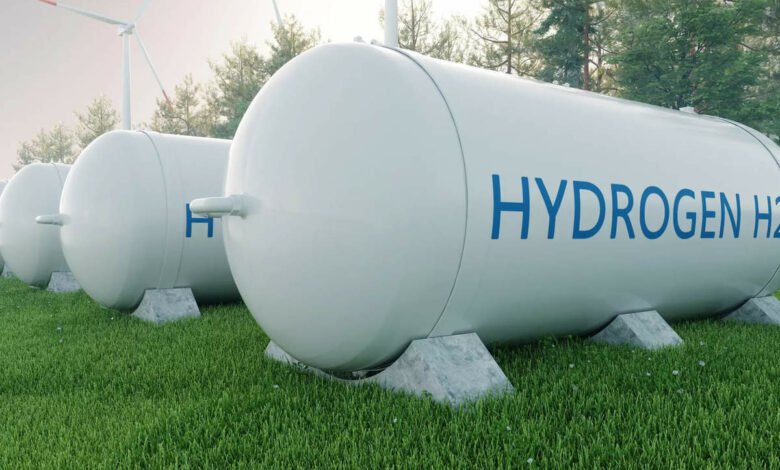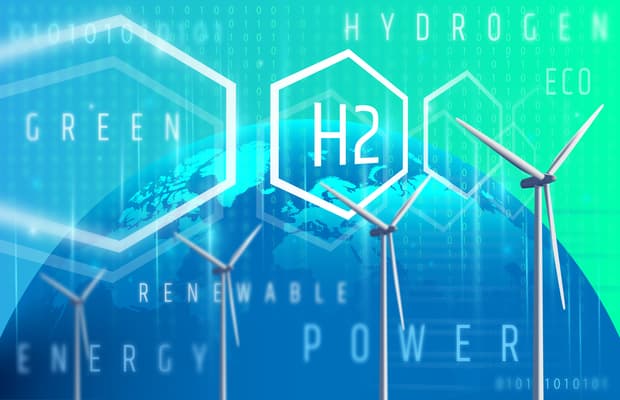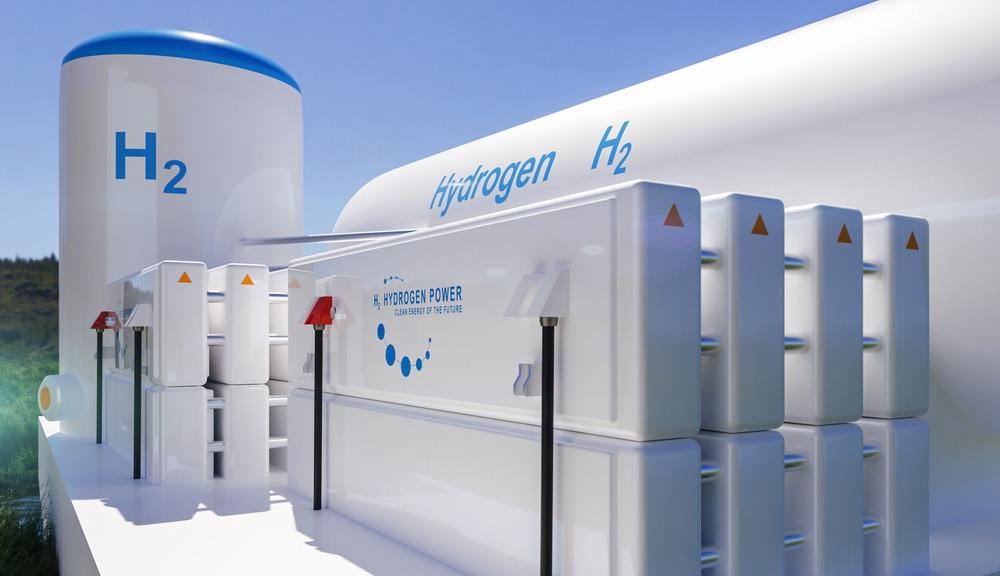
India’s new policy step could make it ‘The Middle East of green hydrogen’
The government’s announcement of the phase one National Hydrogen Mission on February 18 was greeted with cheers on Wall Street, with Morgan Stanley India describing it as a “watershed moment.”
The government has announced a new strategy to attain a production target of over 5 million tonnes of green hydrogen capacity and related renewable energy capacity by 2030.
The government has incentives for green hydrogen producers, like a 25-year remission of inter-state transmission rates if projects are completed before June 2025. Producers can buy renewable energy on the spot market or build their capacity, and they can bank unutilised power with power distribution firms for up to 30 days.
“We believe India’s competitive advantage, along with the government’s efforts, may make it the world’s cheapest Green H2 generator.” In consequence, the country might become the Middle East of green hydrogen, according to brokerage firm Edelweiss Securities.
India’s announcement of the green hydrogen policy aligns with its attempts to transition away from fossil fuels to reach its goal of being a carbon-free economy by 2070.
However, the policy will have little impact on the economics of green hydrogen production, which is still a costly endeavour. Green hydrogen is considered environmentally beneficial because it is created solely from renewable energy sources rather than the typical natural gas steam reforming method.
India presently produces 9% of the world’s grey hydrogen capacity. Grey hydrogen demand has increased in India, owing to fertilisers and chemical sector users. In a letter, Goldman Sachs India wrote, “More initiatives are needed to help the green hydrogen industry, which is presently in its fledgling phases with high prices and a relatively smaller scale.”
Given the country’s cheap renewable power pricing, green hydrogen is a feasible alternative to fossil fuels in India. According to Goldman Sachs, hydrogen generation in the country could necessitate 121 Gigawatts of renewable electricity capacity.
According to Morgan Stanley, India’s decreased renewable electricity costs might let the country create hydrogen as fuel at extremely low costs. “We estimate that as scale hits an inflexion point, green hydrogen prices will fall by half by mid-decade, allowing it to compete with blue hydrogen and gas,” Morgan Stanley wrote in a note.
Reliance Industries, for example, has revealed multibillion-dollar ambitions to manufacture green hydrogen in the future. By 2030, RIL wants to create green hydrogen at $1 per kilogramme. Morgan Stanley believes RIL will profit from a $5 trillion green hydrogen market by the end of the decade.
However, the following steps in the hydrogen mission must focus on creating demand and providing further incentives to manufacturers. According to Goldman Sachs, the government is expected to introduce staggered purchase obligations for critical businesses such as refining and fertiliser.
“Given the present higher cost of producing hydrogen, we expect the government to provide some viability gap support to consuming sectors in the early stages,” Goldman Sachs stated.

National Hydrogen Mission (NHM)
What is National Hydrogen Mission?
On the 75th anniversary of independence, the Prime Minister of India announced the commencement of the National Hydrogen Mission (NHM) to reduce carbon emissions and increase renewable energy sources.
The National Hydrogen Mission aims to reduce carbon emissions and enhance renewable energy use while aligning India’s efforts with the worldwide best technology, policy, and legislation practices.
The Indian government has set out Rs 25 crore in the Union Budget for 2021–22 for hydrogen energy research and development to produce three-quarters of its hydrogen from renewable sources by 2050.
The National Hydrogen Mission aims to increase Green Hydrogen production and use while aligning India’s efforts with worldwide best practices in technology, policy, and regulation.
According to the Ministry of New and Renewable Energy, the NHM has selected pilot projects, infrastructure, supply chain, research and development, legislation, and public outreach as broad areas for investment, with a proposed budget of Rs 800 crores over the next three years.
It intends to use its geography and low solar and wind tariffs to manufacture low-cost green hydrogen and ammonia for export to Japan, South Korea, and Europe.

How is Hydrogen energy better?
Hydrogen is gaining traction as a viable energy source since it has no carbon content and is non-polluting, but hydrocarbons have a net carbon content of 75–85 per cent.
The use of hydrogen energy is predicted to cut carbon emissions by 1.5 billion tonnes by 2021. It has the highest energy content in weight but the lowest volume.
Although hydrogen is the most abundant element on the planet, commercially viable hydrogen can be produced from hydrocarbons like natural gas, oil, and coal using processes such as steam methane reforming, partial oxidation, and coal gasification, and renewables such as water, sunlight, and wind using electrolysis, photolysis, and other thermo-chemical processes.

Advantages of green hydrogen (H2)
- Green hydrogen is created using sustainable energy
Green hydrogen is created when excess electricity from renewable energy sources is transformed to hydrogen in power-to-gas plants. It is an energy source and raw material that is environmentally benign and convenient to transport and store.
- Green hydrogen stabilises the electricity and heat supply
Renewably-produced hydrogen can be transformed into heat or electricity and used flexibly for household energy and electricity supply. As a result, in the case of weather-related power fluctuations, renewable energies will always be available in sufficient numbers.
- Green hydrogen is versatile and can be used innovatively
The most plentiful element, hydrogen, has tremendous innovation potential. It can be used as a fuel or coolant, a source of energy and heat, and as a raw material in manufacturing. Electrolysis technologies are on the verge of entering the growth and profit phase, and fuel-cell systems are already in use with success. However, Germany must adopt a technology-open legal environment for hydrogen from power-to-gas facilities to be successfully marketed economically.
- Green hydrogen reduces CO₂ emissions
Presently, fossil fuels account for 96 per cent of hydrogen production. The traditional method of manufacture emits climate-damaging carbon dioxide into the atmosphere. On the other hand, water is electrolysed into hydrogen and oxygen in the power-to-gas technique. While the hydrogen is being used, the by-product oxygen can be utilised for other purposes or discharged into the atmosphere.

Present status and potential of Hydrogen usage:
Apart from being kept in the liquefied and solid states, hydrogen can be stored in cryo-compressed tanks in gaseous form.
Hydrogen is used mainly in the industrial sector, including oil refining, ammonia manufacturing, methanol production, and steel manufacture.
It has promise as a direct replacement for fossil fuels in the transportation industry. Low-carbon fuel options are restricted in shipping and aircraft, which presents an opportunity for hydrogen-based fuels.
Hydrogen has been colour-coded according to its source of production, focusing on Green Hydrogen because it helps reduce greenhouse gas emissions and increase the share of renewables in overall energy consumption.
Green hydrogen is now two or three times more expensive to produce than blue hydrogen, but with advances in science and technology, it is predicted to become a low-cost fuel in the future.

Hydrogen energy in India:
Hydrocarbons presently account for most global energy consumption, while hydrogen is still in its early stages of adoption in India’s energy industry.
Hydrogen production, storage, usage, power generation, and transportation applications are researched by government and non-government funding bodies. The National Hydrogen Energy Board was established in 2003. The Ministry of New and Renewable Energy published the National Hydrogen Energy Road Map in 2006, naming transportation and power generation as two of the most important green energy endeavours.
India is taking part in the Mission Innovation Challenge for Clean Hydrogen, which aims to speed up the creation of a worldwide hydrogen market by identifying and overcoming technological barriers to gigawatt-scale hydrogen production, distribution, storage, and usage. India plans to create three-quarters of its hydrogen from renewable sources by 2050.
In India, R&D efforts are aimed at increasing the efficiency of water-splitting reactions and developing new materials, catalysts, and electrodes to speed up the process.
Fuel cell technology is now the focus of more than 100 research groups. In India, several foreign and Indian enterprises are working in hydrogen production, storage, and distribution.
Way forward:
India’s National Hydrogen Mission is a bold concept that can assist the country in reducing carbon emissions while also diversifying its energy portfolio and reducing dependency on foreign sources. However, India requires a more detailed road plan to achieve its objectives, for which the GCC (Gulf Cooperation Council) countries’ performance should be examined.
The GCC countries have made considerable investments in hydrogen energy and see it as a viable option for a cleaner future. This is a chance for India and the GCC countries to improve their hydrogen energy research and development, manufacturing, storage, and transportation.
India could consider expanding its hydrogen cooperation with GCC countries, mainly the front-runners like Saudi Arabia, the United Arab Emirates, and Oman. India and the Gulf Cooperation Council share ideas, interests, and political will to engage; they need to boost public-private partnerships in the hydrogen energy industry, which has a bright future.

How can India become a global leader in green hydrogen production and export?
Because the globe appears to be focused on reducing the impact of local weather change and lowering its carbon footprint, governments worldwide are focusing their efforts on renewables. Solar, wind, tides, hydro, biofuels, and other extracting energy from non-carbon sources have gained popularity. The political landscape has changed due to environmental challenges and to preserve long-term financial goals. Customers have become more vocal about their environmental impact and seek out items with the most negligible carbon impact.
International countries have developed strategies for achieving carbon neutrality within the next 20-40 years, and renewable energy is the solution to this challenge. Each country has its strengths and access to applied sciences, natural resources, capital, and other goals. Nations around the world are typically not evenly positioned to generate enough renewable energy to meet all of their energy needs.
At the same time, some countries, including Australia, India, and others, are doing so. Having the ability to meet all of their energy needs with renewable energy and yet have energy leftover This mismatch necessitates a vitality vector that can be easily transferred across nations to meet vitality demand, similar to the oil and gasoline trade today. This is where hydrogen plays a role in the global drive to transition to an emissions-free society and reduce our carbon footprint.
Hydrogen can be produced using photovoltaic, wind, geothermal, tidal, and other renewable energy sources. Water is split into its constituent elements, oxygen and hydrogen, through a process known as electrolysis. This hydrogen can be carried over any distance in gaseous or liquid form or combined with additional components, like ammonia or methanol.
Green Hydrogen, i.e. hydrogen produced using renewable energy, is carbon neutral as a source of energy and does not emit any carbon dioxide into the atmosphere. The promise of hydrogen in decarbonising the financial system has piqued the interest of both governments and businesses.
The most critical barrier to hydrogen adoption is its cost. The US Department of Energy has announced its audacious Earthshots effort, which aims to reduce the cost of inexperienced hydrogen by roughly 80% to US$ 1 per kilogramme in a decade, or the “1 1 1” plan. Manufacturing components, storage, transportation, handling, security, and other issues related to hydrogen are all secondary challenges if cost-parity with fossil fuels can be reached.
Most countries would benefit economically from developing an environment that caters to hydrogen since they will be less reliant on importing fossil fuels. Because inexperienced hydrogen will alter global trade balances, major oil and gas exporting nations are developing long-term strategies to supply inexperienced hydrogen.
India will be a major benefactor of the brand new international hydrogen energy trade, and India can become an online energy exporter at some point in the future. The fear of a phase of vitality colonisation is a drawback to a developing worldwide hydrogen finance system.
Financially strong countries with insufficient renewable energy technological capacities will find it easier and more environmentally friendly to invest in impoverished countries where renewable energy sources such as solar and wind are readily available. European governments are already investing heavily in photovoltaic parks in Sub-Saharan Africa to supply inexperienced hydrogen. These investments are not always guaranteed to improve people’s lives in Saharan countries, but they benefit a select few.
This discrepancy will have major geopolitical consequences in the long run, which must be adequately addressed before making investments in these countries. However, the disadvantages of a transition to clean energy technologies will not prevent hydrogen from becoming the most suited commodity in international trade.
The term ‘Delivery Sunshine’ was coined in Australia to describe the trade of environmentally friendly hydrogen produced by solar energy. The demand for clean energy in countries like China, South Korea, and Japan is rapidly increasing, and Australia is rapidly expanding its infrastructure to export inexperienced hydrogen to those countries.
Australia, the world’s largest coal exporter and second-largest LNG exporter, is attempting to replicate its success in becoming a leader in the manufacturing and exporting inexperienced hydrogen. The Australian National Power System was launched in July 2019, and the federal government had set aside AUD 500 million towards hydrogen activities at the time.
Dedicated projects in Australia account for more than half of all global initiatives in green hydrogen. India can follow Australia’s lead in exporting inexperienced hydrogen and establishing hydrogen hubs across the country. From the walls of the Crimson Fort, India’s Prime Minister declared that India would become a global centre for green hydrogen and that green hydrogen would provide India with a quantum leap in its efforts to combat climate change.
The hydrogen sector is one of the few areas where India has taken steps to keep up with world technology leaders. India is one of the few countries to have announced national hydrogen ambitions. The Indian government wants to achieve energy self-sufficiency by 2047, and hydrogen will play a crucial role in helping India achieve this goal.

Green Building: Where Future Lives
Although the notion of “green building” was first introduced in India about two decades ago, the movement has failed to catch on and become a famous brand.
Except for fairly informed individuals or directly associated with innovative, ecologically friendly building procedures, the phrase will likely convey something other than what it indicates to the rest of the public.
According to the World Green Facility Council (WGBC), a green building is “a building that, in its design, construction, or operation, lowers or eliminates negative impacts on our climate and natural environment while creating positive consequences.” Green building is, also known as sustainable building or green construction aids in making dwellings healthy for both people and the environment.
According to the Indian Green Building Council’s 2017 findings, green technology has been used in around 4,500 registered projects. Currently, just approximately 5% of India’s total structures use green technologies in their homes. So, it is past time for the entire country to be thoroughly informed about the Green Building Movement (GBM). And the reason for this urgency in education and action is simple: India aspires to be “one of the global leaders in the “sustainable built environment” by 2025, and Indians are entitled to better living conditions.
edited and proofread by nikita sharma




